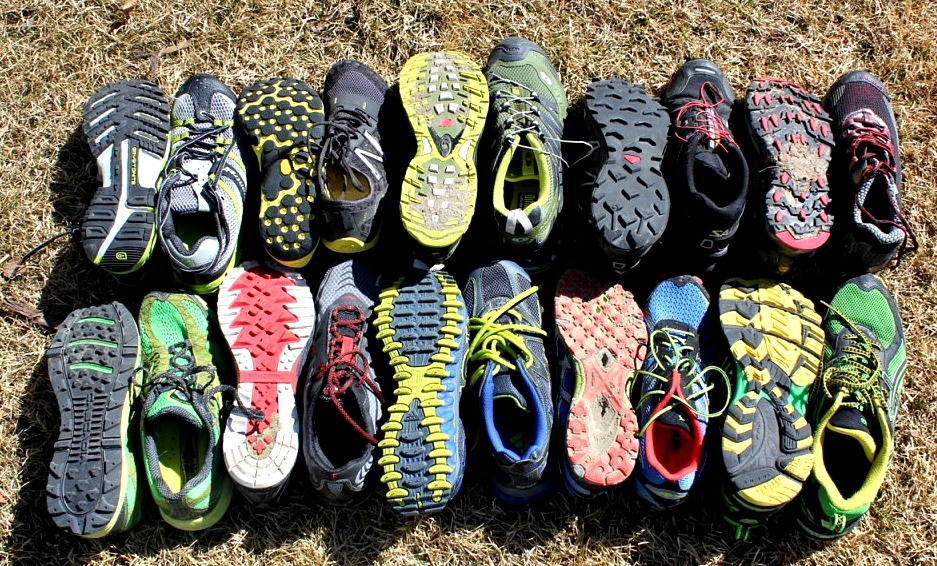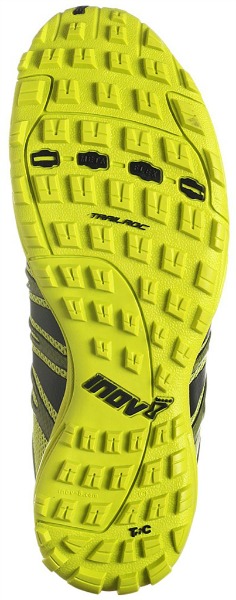Road Shoes vs Trail Shoes

Continuing his series of posts running coach and Ultratrail athlete Jonathan Worswick looks at the choices we make, in road shoes vs trail shoes.
As a coach, I often get asked about racing on firm ground, and the choice of shoes, road shoes vs trail shoes. Normally it goes something like this….
“…the run is on firm track, not technical at all. I have always just worn trail shoes but I’m wondering if road shoes might be just as good?”
Simply put – Yes there is nothing wrong with running some trail events in road running shoes.
My own experience, especially on some Australian and also US trails, such as the Surf Coast Century in Australia and the San Juan Trail in San Diego California, is that yes there are times when road shoes do serve you better than trail shoes.
 I have an armoury of shoes of different drop, grip, toe protection, waterproofing and support. I choose the shoe to fit the event. Sometimes I get it wrong and sometimes there isn’t a perfect choice.
I have an armoury of shoes of different drop, grip, toe protection, waterproofing and support. I choose the shoe to fit the event. Sometimes I get it wrong and sometimes there isn’t a perfect choice.
This February (2017) I am racing in the South Island, New Zealand. The terrain will be technical with steep ascents and descents so I will be running in a trail shoe.
However, in March I will be racing in the Six-Foot Track in Australia where I will be using a hybrid shoe as there is a substantial amount of hard fire trail but some technical single track.
If I was running one of the Lake District races in the UK, such as the Wasdale or Ennerdale horseshoe, then I would be more likely to choose a purely trail shoe with a good grip. This type of shoe would be ideal for the generally wet conditions, and fast downhill on rocky single track.
Obviously, we don’t all have the finances, or the space, to have a choice of shoes for every occasion, but having a few to choose from has distinct advantages.
In my own experience, when looking at road shoes vs trail shoes you need to include the following in making your choice:
-
- Support (provided with road shoes) is important especially on the downhills when you are striding out and landing heavily.
-
- A lower drop (heel to toe), certainly less than 9mm, preferably 3-6mm. This helps prevent rolling on any technical sections and gives you a better “feel.”
-
- Makes sure you can stabilise your ankle in the shoes (generally the lace lock does that) to prevent your foot moving forward especially on the downhills.
-
- Does the terrain include any rocky fire trails? Think about the cushion in your road shoe as some trail shoes have rock plates (toughened soles) to prevent those smallish rocks from piercing through to the sole of your foot.

- Does the terrain include any rocky fire trails? Think about the cushion in your road shoe as some trail shoes have rock plates (toughened soles) to prevent those smallish rocks from piercing through to the sole of your foot.
-
- Does the road shoe fit snuggly over the main part of your foot? When you run on the road in road shoes you won’t experience any “rolling” of the shoe so its not an issue. But it could be if there are any traverses on an angle. You don’t want too much play in the material.
-
- How much running at a decent clip will be involved? If you are striding out on fire trail/dirt road then the ground reaction force will be greater. Over an extended period this can cause extra strain on the muscles (hip and quad) and subsequent soreness. So for events with good stretches of running a more supportive shoe may be beneficial.
Does a hybrid shoe exist?
 Of course our talk so far leads to one question. Does a hybrid shoe exist that ticks all the boxes, a jack of all trades shoe? Well that’s a tricky one to answer for several reasons:
Of course our talk so far leads to one question. Does a hybrid shoe exist that ticks all the boxes, a jack of all trades shoe? Well that’s a tricky one to answer for several reasons:
Every foot is different. Even both my feet are different, one is slightly longer due to a fallen arch. This means that a great all round shoe for one person may not fit your foot.
I like running in zero drop shoes (heel to toe height difference) but they are not for everyone. So what I like may not suit you
Manufacturers have a habit of making slight “improvements” to shoes. You might discover the perfect shoe only to find the next year the heel is slightly higher or the material tighter in the forefoot area. So annoying….
Obviously there are some out there better than others. Your best bet is to ask around your running buddies and go into your local store ask their advice.
A good starting point are the main brands:
La Sportiva
Salomon
Inov-8
Hoka One One
Whatever you choose you need to be confident and comfortable over the long haul in your choice and obviously don’t try something new for the first time in an event.
Here is a link to an article by a great Australian trail runner and Physio:
What shoe will work best for you?
Some additional questions and answers you may find useful:
Should I change my shoes or socks during a race? My recommendation would be that if your shoes and socks are giving you no trouble then don’t change or fiddle with them too much. Certainly, fix any issues sooner rather than later such as a hot spot or a small tightening or make a quick stop after a creek crossing to get rid of grit.
However, be aware that a slight change to the roll of a sock can cause a blister and after a long period agony which can disrupt your race if not end it. I lost a big toe nail a week after running the Angeles Crest 100 miler when I didn’t correct a “hot spot”. It was horrible, black and pussy after the race and I couldn’t where proper shoes for a number of days. Sometimes the endorphins hide some of the pain and you don’t find out until it’s too late.
Now from a psychological perspective, a change of socks after 12 or 18 hours into a 100 miler can be a blissful experience (even if it doesn’t last long). Anything to keep your spirits up is a good thing.
Obviously in a shorter race then time is more an issue, 5 minutes taking your shoes off and re-arranging socks can take 5 minutes.
If my shoes and socks get wet should I stop and wring the socks out? – Sloshing shoes and sodden socks aren’t the most comfortable. Most shoes soon expel most of the excess water. Socks can take longer and, if wet, can be heavy and fold up and possibly cause blisters. A good choice of sock is a thin one that keeps its shape and reduces the risk of folding up. When racing, I do not stop and make any changes unless there is an issue.
Should I swap at an aid station if the trail changes from easy to technical? Generally, I would say no but there are occasions where this might work. One of the design requirements from Killian Jornet for the original Salomon Sense lightweight trail shoes was to allow for him to quickly change into a faster, lighter shoe with some cushioning to use in the latter stages of a 100 miler.
It would be great to hear how you get on. If you do need any advice or have any questions then use the comments box below, and I will get back to you.
 Why not join me in the Pyrenees this September, where I will be guiding on the Trail Running Holiday Pyrenees.
Why not join me in the Pyrenees this September, where I will be guiding on the Trail Running Holiday Pyrenees.
Until the next time enjoy the trail.
Jonathan Worswick


